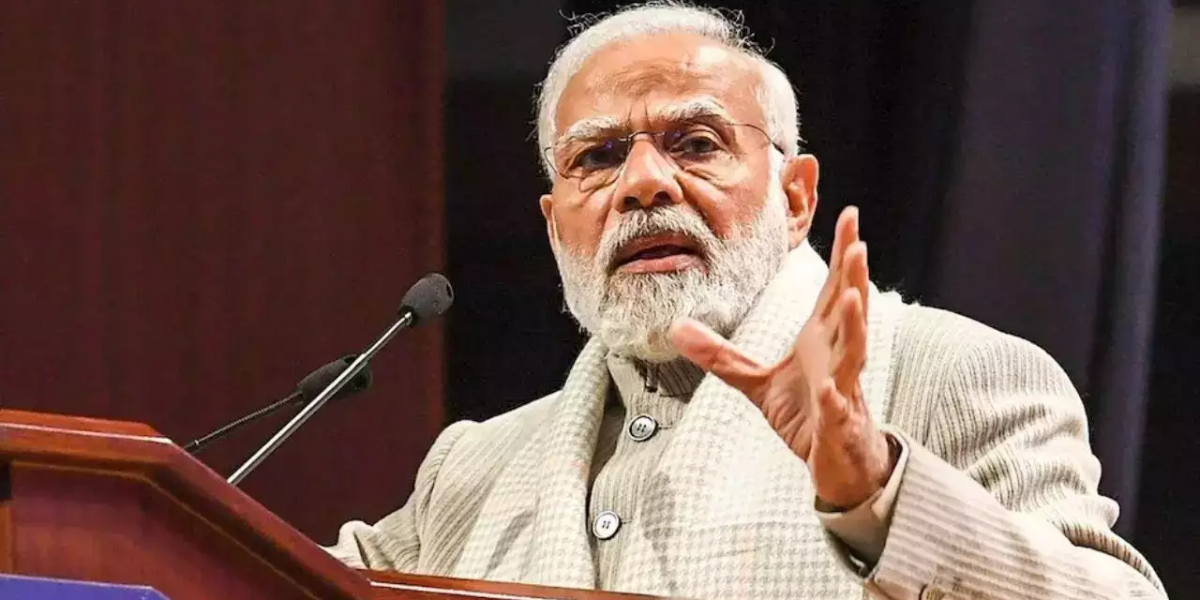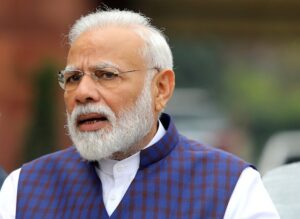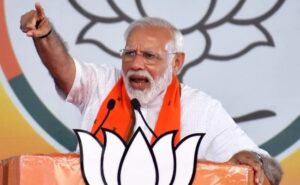Narendra Modi is seeking for a historic third term as Prime Minister of India, ten years after he first became Prime Minister. What makes him India’s most prominent leader in decades beyond his current tenure?
Since he took office in 2014, many voters have the impression that things have improved; however, it remains to be seen whether those who are struggling will support him in the general election of the country.
Saree weaver Shiv Johri Patel, who lives in Mr. Modi’s seat in the city of Varanasi in the north, has expressed that he is concerned about a number of issues, but he is certain about who would receive his vote.
I am quite impressed with Mr. Modi’s work. Under no other government have we witnessed the provision of such a large number of social benefits to low-income individuals,” he argues .Although Mr. Patel claims that his sons are unable to find work and that local intermediaries have defrauded him of a welfare payout from the federal government, he does not hold the prime minister responsible for these issues.
“It doesn’t matter if I get what I’m owed or not, I will still vote for him,” he stated to the British television network.
Elections are being held in Varanasi for the final round of voting before the day of the results, which is on June 4th.At the age of 73, Mr. Modi continues to be a figure that is both enormously popular and divisive, both in India and further beyond.
Those who back him assert that he is a powerful and effective leader who has succeeded in keeping his promises. His government is accused of weakening federal institutions, cracking down on dissent and press freedom, and making the Muslim minority in India feel endangered under his leadership, according to critics.
Both Mr. Modi’s supporters and his detractors are the most devoted of his followers. According to Ravindra Reshme, a political analyst, “You either like him or you dislike him.” Opinion surveys have placed Mr. Modi in a commanding lead over his competitors, and it is widely anticipated that his party will be the one to establish the future government of India. Warning: polls have been proven to be inaccurate in the past, and voters have the ability to deliver nasty shocks, even for well-liked leaders.
His Bharatiya Janata Party (BJP) has been given a challenging objective, which is to gain 370 seats out of 543 in the parliament. This is a huge increase from the 303 seats that they won in 2019. It would mean not only retaining the northern states that the party won the last time around, but also gaining ground in historically more difficult areas in the south for the Bharatiya Janata Party (BJP).
The Modi brand
As he strives to achieve a supermajority, Mr. Modi is the most appealing candidate for his party.
You can find his face everywhere; it is plastered on bus stops, billboards, and advertisements in newspapers. He is often seen addressing electoral rallies that are shown on television.
Over the course of the previous year, while India was hosting the G20 conference, Delhi was covered in posters depicting him greeting foreign leaders. It is true that the event is organized in accordance with a rotating presidency; yet, the PR campaign gave the impression that it was due to Mr. Modi’s efforts alone.
It became a mega-event thanks to Mr. Modi’s efforts. In many respects, he is aware of what an event is about and how it ought to be utilized, as Santosh Desai, an expert in the field of brand creation, stated in an interview with the BBC earlier this year.
Although Mr. Modi is widely visible, he is rarely in a position where journalists or citizens may ask him difficult questions. Mr. Modi and his team have a good understanding of branding and narrative control. Since he became Prime Minister of India, he has never given an interview, has never conducted a press conference, and is almost never challenged. In addition, the interviews he does give are extremely infrequent.
An image of Mr. Modi in the media “as someone who was responsible for the Gujarat riots” is something that he had to overcome in order to become Prime Minister, according to RK Upadhya, a political analyst. There was no evidence that Mr. Modi was involved in the violence that occurred in 2002 when he was serving as the chief minister of the state, according to a commission that was convened by the Supreme Court. Over a thousand people, the majority of whom were Muslims, were slaughtered.
When he arrived in Delhi, I believe he had the intention of demonstrating to the media that he did not require their assistance. “Even without you, I am able to connect with other people,” Mr. Upadhya says.
Even more impressive is the fact that the septuagenarian politician has 97.5 million followers on X (which was once known as Twitter) and is the most followed politician in the world on Instagram. Not only does he offer his opinions on the internet, but he also does it in a radio program that is broadcast every month.
Having never been one to pass up an opportunity to interact with people on a personal level, Mr. Modi recently made an effort to connect with younger Indians by spending time with the most popular gamers on camera and awarding awards to influential individuals.
During a recent rally in the state of Kerala, he received applause when he briefly spoke in Malayalam, which is the language spoken in the area.”A great deal of symbolism is involved in a great deal of the things that Mr. Modi does and which the media broadcasts. “He spends every vacation and every festival with the armed forces at the border, in remote locations, or with people who are less fortunate,” says political analyst Sandeep Shastri. “He also spends every festival with people who are less fortunate.”
Visits from other countries, even those that are considered to be ordinary, are hyped up by the domestic media and celebrated at home. Frequently, photographs of him speaking at massive rallies led by members of the diaspora in other countries are broadcast on domestic television as evidence of his popularity on a worldwide scale. The mainstream media in India, on the other hand, gives the trips very little attention in terms of the outcomes.In almost every instance, his interactions with the public appear to have been meticulously scripted. It has been documented that he has been spotted inaugurating a multitude of projects over the course of the past decade, visiting supporters, snorkeling, and even meditating in a cave following the conclusion of the 2019 election campaign.



